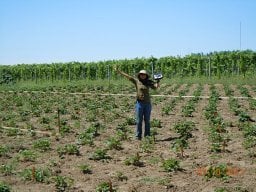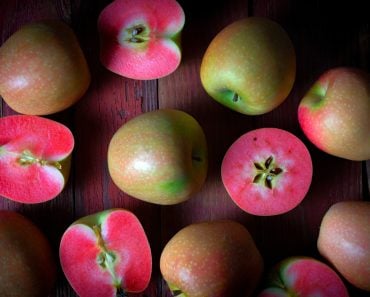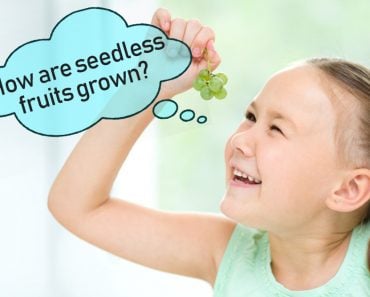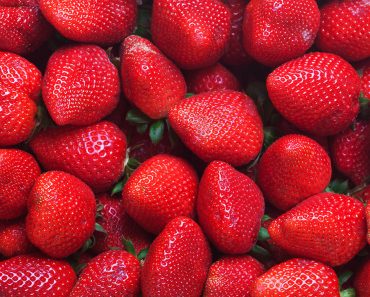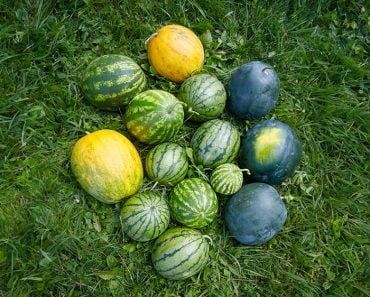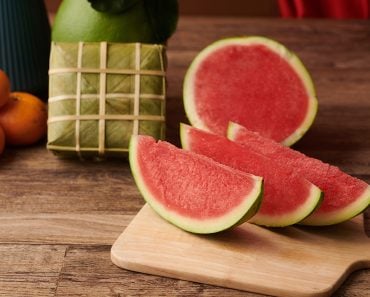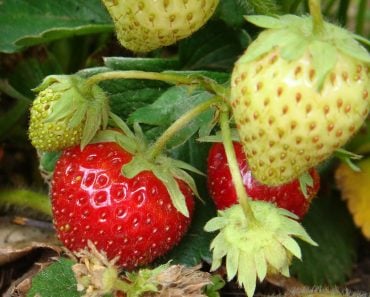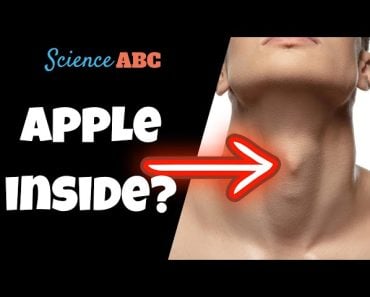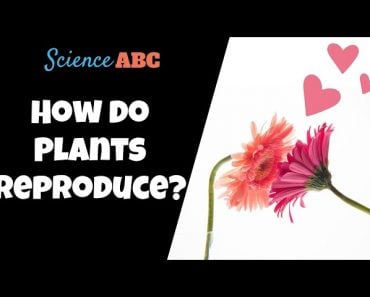Table of Contents (click to expand)
Even though they’re sold as different fruits with different names, peaches and nectarines are the same species of fruit. The only difference is a single gene and some peach fuzz!
Peaches and nectarines are available in stores as distinctly different fruits, yet these two fruits look and taste very similar. Have you ever wondered why?
It turns out that nectarines are basically ‘bald’ peaches! Peaches and nectarines are the same species, Prunus persica. Peach and nectarine trees are virtually indistinguishable. The only difference lies in the fruits: peaches come with a dull fuzzy skin, while nectarines have smooth and shiny skin.
This fuzziness is used to categorize them commercially.
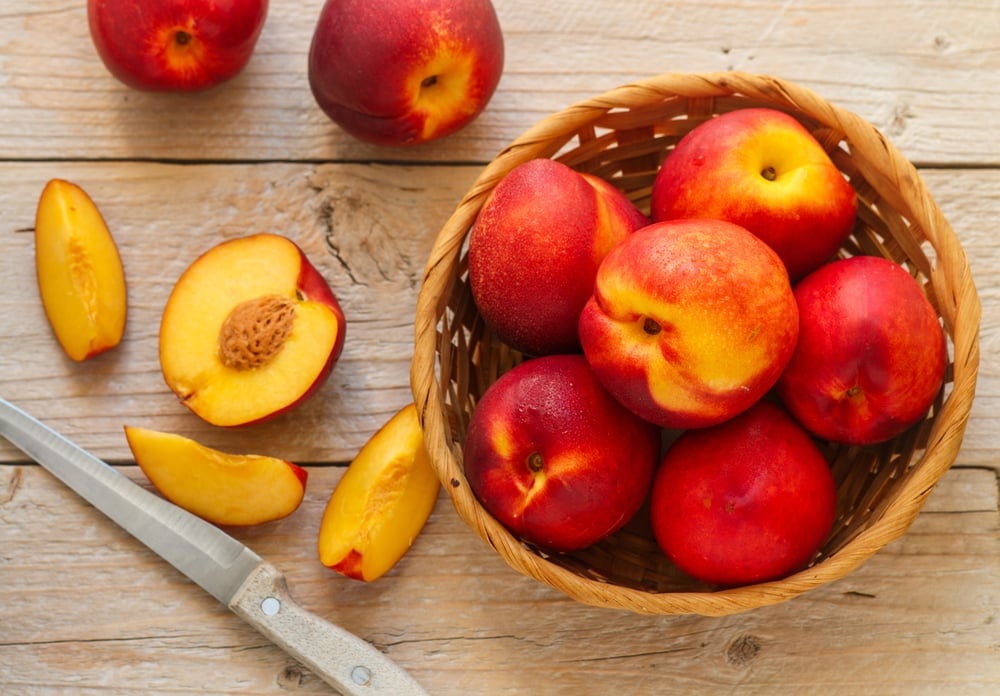
Peaches and nectarines belong to the family of plants called Rosaceae. This family also includes popular fruits such as apples and strawberries.
Within the Rosaceae family, they are classified in the genus Prunus, along with apricots and almonds. Members of the genus Prunus are also called stone fruits, as they are thin-skinned and fleshy fruits with a large seed (stone).
Peaches and nectarines belong to the species persica within the genus Prunus. Nectarines are a mutant (a genetic variant) of peaches that lack the tiny hair-like structures on the fruit surface. They are also shinier than peaches, and their cuticles (outer layer of fruit skin) produce a wax-like substance that gives them their glossy appearance.
Recommended Video for you:
What Are Those Tiny Hairs On Peaches?
The tiny, hair-like structures on the surface of the fruit that make it fuzzy are called trichomes. They are not hair like the kind you or I have. They are formed from the cells of the fruit skin (epidermal cells) and can be made of one or more cells. In some cases, they may contain glands that secrete specific compounds, such as toxins, to protect the plant against pathogens.
In the case of peaches, the trichomes are made of single cells and are non-glandular. The trichomes on the surface of the peach fruit are dead by the time the fruit ripens.
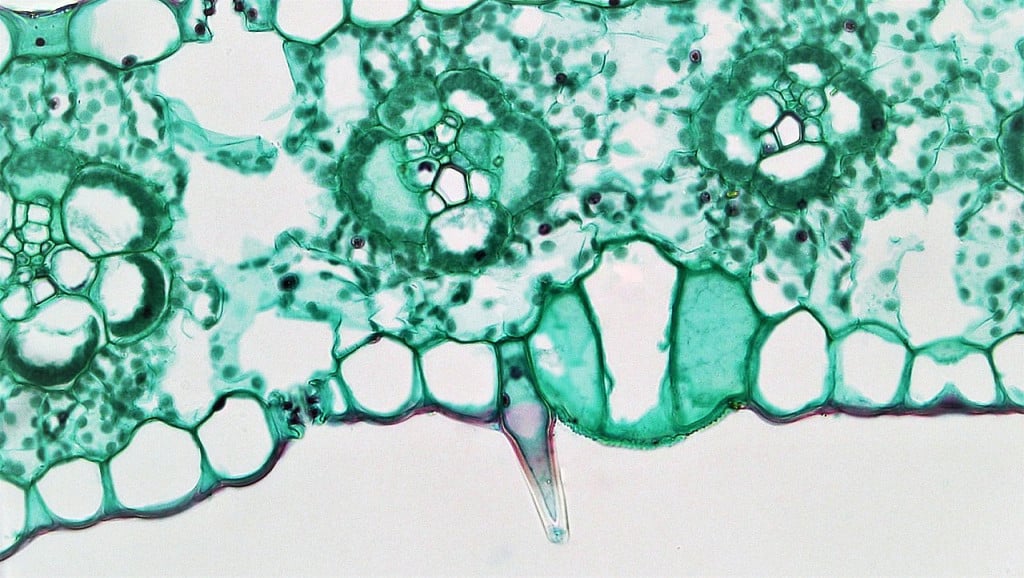
How Is Fuzziness Determined?
The difference in fuzziness between peaches and nectarines is determined by a single gene. Scientists call this gene g (for glabrous, meaning free from hair, as is the case of nectarines).
Big G denotes the presence of fuzziness and little g denotes the absence of fuzziness. G denotes the dominant and fuzzy form; g denotes the recessive and non-fuzzy form.
The lack of fuzziness in nectarines is a homozygous recessive trait. This means that the plant needs to have two copies of g (gg) to be a nectarine. If there are one or more copies of big G (as in GG or Gg), then it will be a peach.
In 2014, a collaboration of scientists from the USA and Italy published a paper that identified the gene responsible for forming the trichomes on the surface of peaches. That genes is PpMYB25.
In the case of nectarines, the gene is ‘disrupted’. The presence of a mobile piece of DNA (Ty1-copia retrotransposon) led to the gene losing its ability to form trichomes.
When the scientists further compared this gene PpMYB25 to similar genes in other plants, they found that these genes are involved in the formation of trichomes not only on the fruit itself, but also on other parts of the plant, such as the stem and leaves.
What does the PpMYB25 gene do in the cell?
The gene PpMYB25 is what biologists call a transcription factor. Transcription factors regulate multiple processes within the plant. Imagine that there is a master switch that can turn on all the lights in your house. A person needs to turn on this switch for all the lights to work. That person is the transcription factor who turns the switch ‘ON’ for all the individual lights to work. However, the lights in various rooms (downstream) can be turned off separately, if needed.
What this means is that it is likely that other processes are also impacted when the gene is disrupted in nectarines. The researchers did see that happening.
When researchers compared the surface of peaches and nectarines using scanning electron microscopy and gas chromatography, they found difference in the trichome structure and cuticle wax.
A scanning electron microscope uses a beam of electrons to scan a surface. The electrons interact with the atoms on the surface and gives out signals that are used to form an image with a magnification of up to 500,000x. Gas chromatography separates the volatile chemical components of a sample to identify each individual component.
This difference in cuticle wax gives nectarines their shiny appearance.
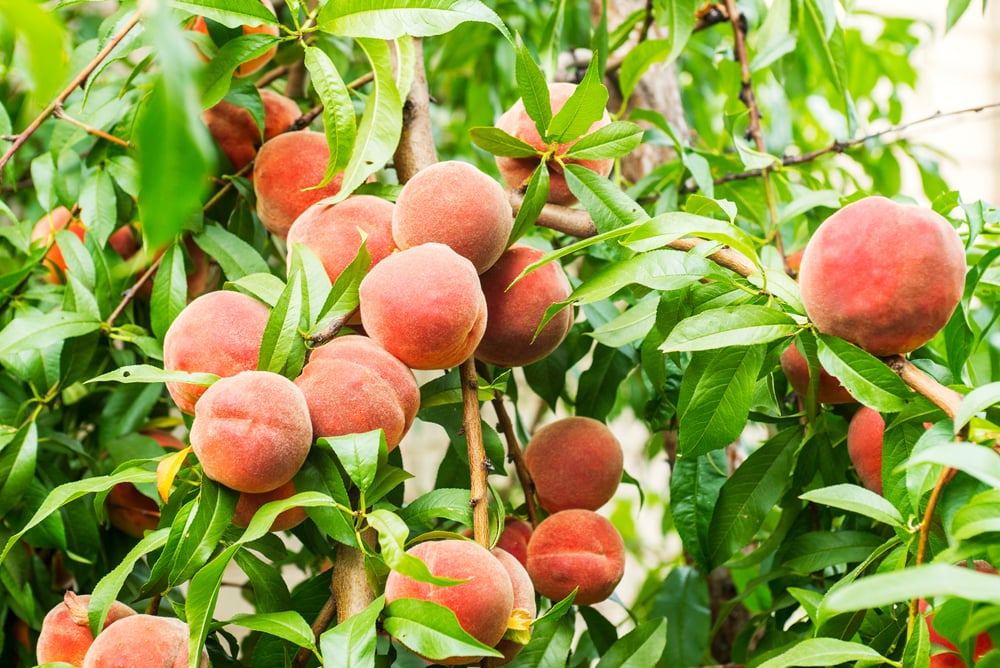
Scientists used this information to develop a genetic identifier that can be used to test seedlings. We no longer have to wait for the seedlings to grow up and bear fruit to know whether they will bear peaches or nectarines. All we need is DNA from the leaf of the seedling; with that, we can test it with genetic markers to identify which fruit will emerge.
More recently, in 2022, a group of scientists from China reported that two genes PpMYB25 and PpMYB26, with similar functions, determine the differences between peaches and nectarines. Both the genes are involved in the formation of trichomes; PpMYB25 activating PpMYB26. Take PpMYB25 out of commission (by the retrotransposon), then neither can it perform its own function, nor can it activate PpMYB26. In the absence of both of these genes, the fruit does not develop trichomes.
Conclusion
Peaches and nectarines are basically the same species, but they differ in only one gene. For those who are unable to pick one or the other, peach breeders have developed varieties that combine the best of both worlds. Crosses between peaches and nectarines, called Peacherines, are available commercially and are said to have “a sweet, old-fashioned flavor and minimal fuzz”. The PpMYB25 gene, in combination with PpMYB26, which acts downstream, determines whether the fruit will be a peach or a nectarine.
References (click to expand)
- Vendramin, E., Pea, G., Dondini, L., Pacheco, I., Dettori, M. T., Gazza, L., … Rossini, L. (2014, March 3). A Unique Mutation in a MYB Gene Cosegregates with the Nectarine Phenotype in Peach. (C. Peace, Ed.), PLoS ONE. Public Library of Science (PLoS).
- Yang, Q., Yang, X., Wang, L., Zheng, B., Cai, Y., Ogutu, C. O., … Han, Y. (2022, February 2). Two R2R3‐MYB genes cooperatively control trichome development and cuticular wax biosynthesis in Prunus persica. New Phytologist. Wiley.
- Creller, M. A., & Werner, D. J. (1996, March). Characterizing the Novel Fruit Surface Morphology of `Marina' Peach Using Scanning Electron Microscopy. Journal of the American Society for Horticultural Science. American Society for Horticultural Science.

